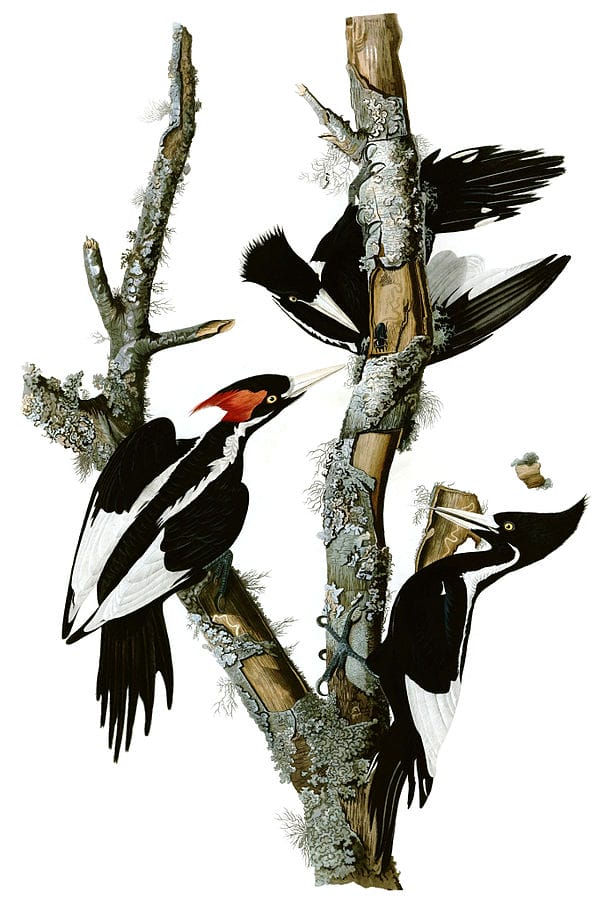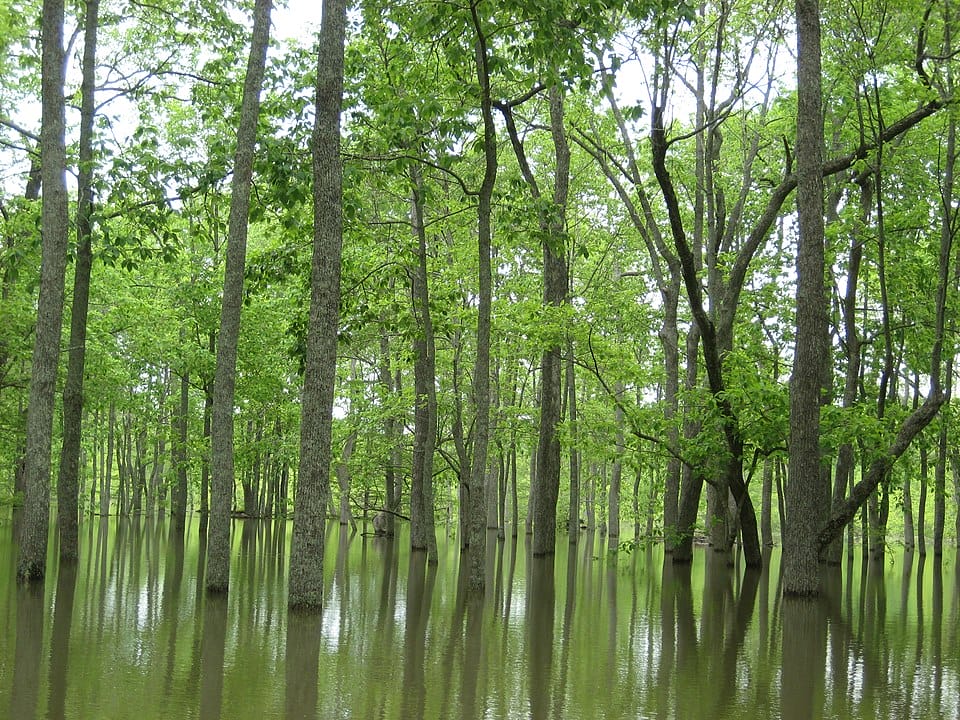

Uh oh...
It appears that you're using a severely outdated version of Safari on Windows. Many features won't work correctly, and functionality can't be guaranteed. Please try viewing this website in Edge, Mozilla, Chrome, or another modern browser. Sorry for any inconvenience this may have caused!
Read More about this safari issue.

Likely one of the most important rivers in the country, the Cache River flows quietly through northeast Arkansas. As a confluence of agricultural ditches just over the Missouri border flow southwestwardly, the Cache River forms. Its muddy waters twist and turn and slowly flow for 213 miles until the river meets with the White River in Clarendon. It generally avoids large towns along the way while its remote, swampy areas promote an abundance of wildlife and trees. The Cache is a crucial habitat for waterfowl, black bear and other mammals, birds, reptiles and amphibians.

The waters of the Cache River combine with myriad oxbow lakes, bayous, sloughs and swamps, and when paired with the lush forests that surround them, provided the perfect spot for the formation of the Cache River National Wildlife Refuge. Unaltered by draining and channelization, the area is mostly untouched by man-made changes and considered a “Wetland of International Importance.” The refuge currently encompasses 72,000 acres of land in several tracts across Jackson, Woodruff, Monroe and Prairie counties. The reserve incorporates land surrounding the Cache River, White River and Bayou De View, providing a home to over 200 species of birds, 50 different reptiles and amphibians, more than 50 mammals and a variety of trees.

Black Bear
Arkansas was once considered The Bear State, but as early as 1850 the population had dropped significantly, likely due to overharvesting. According to the University of Arkansas Division of Agriculture, “Good black bear habitat is characterized by relatively inaccessible terrain, thick understory vegetation, abundant sources of food in the form of shrub or tree-borne soft and hard mast and adequate denning areas.” This is a near-perfect description of the Cache.
By 1930, with only 50 bears remaining in the state, the bear population was on the brink of extinction. That population was located in the wetlands of the lower White and Cache Rivers. Arkansas Game and Fish began to reintroduce bear into the state in the late 1980s. But the populations found in the Cache and White River areas are descendants of Arkansas’s native bear population, helping bring today’s count to more than 5,000.

Ivory-Billed Woodpecker
Once considered extinct, the Ivory-Billed Woodpecker is now considered critically endangered, though lack of concrete evidence has led to lengthy debates among scientists over whether the bird still exists or not. In 2004, Gene Sparling, an amateur naturalist, took a photograph of a bird he spotted in the Cache River Refuge. Sparling believed the bird to be an Ivory-Billed Woodpecker. Scientists and ornithologists from around the world descended upon the area to investigate. Although no definitive evidence could be found, the photo, along with several additional compelling photos and videos from Louisiana and Florida, have given scientists hope that the woodpecker still resides.

Waterfowl
Every fall hunters from around the country flock to southeast Arkansas along with millions of ducks. Seasonal conditions around North America, including as far away as the Canadian prairies, can have a direct effect on Arkansas’s seasonal duck numbers. Weather, temperature, drought and flood conditions all cause the numbers to fluctuate. The Cache River plays a vital role in waterfowl populations for all of North America. Along with the lower White River, the Cache River and the refuge have led Stuttgart to be named the Duck Capital of the World. The refuge is considered the most important wintering ground for waterfowl on the continent.

Trees
The Arkansas Delta was once home to millions of acres of bottomland hardwood forests. Less than 20 percent of the original forest remains, but the Cache River Refuge contains several of the last, contiguous strands of bottomland hardwood in the state and the country.
Although no largely populated towns lie along the banks, her waters are essential to many of the smaller surrounding communities and vital to native plants and wildlife. The Cache may not be as impressive as some of Arkansas’s larger rivers, but she should be deeply and warmly regarded as crucial to helping Arkansas thrive as The Natural State.
To learn more about the Cache River, check out these resources.
Cover photo by U.S. Fish and Wildlife, Public Domain
Join the Conversation
Leave a Comment
4 responses to “The Cache River and Cache River National Wildlife Refuge”
 Leave a Reply
Leave a Reply
We do the work.
You check your email.
Sign up for our weekly e-news.
Get stories sent straight to your inbox!










 Leave a Reply
Leave a Reply
[…] about 210 acres of grassland tracks in margin land that borders waterfowl impoundments in the Cache River National Wildlife Refuge. The organization is also partnering with Natural Resources Conservation Service in Arkansas to […]
I have a V-hull Duracraft boat made in 1954. My research says it is made from the same aluminum as used to construct aircraft for the war effort. It is used by my family on a small pond, especially my grandkids. Love the article.
My dad hunted quail and I’m sure helped with their demise. The last quail I heard was about 10 years ago. In the late 50’s you cold simply walk the fence lines and brush and find quail in abundance. Then later years required a dog to hunt. They are gone now. Predators have also taken their share. Hope these restoration efforts work. I’d love to hear them again.
[…] Means says the area is prime for an older, single bear. Farmland dots the area and the White and Cache Rivers help create a lush environment that could be perfect for Bruno. Although bears aren’t common in […]
[…] The Cache River […]